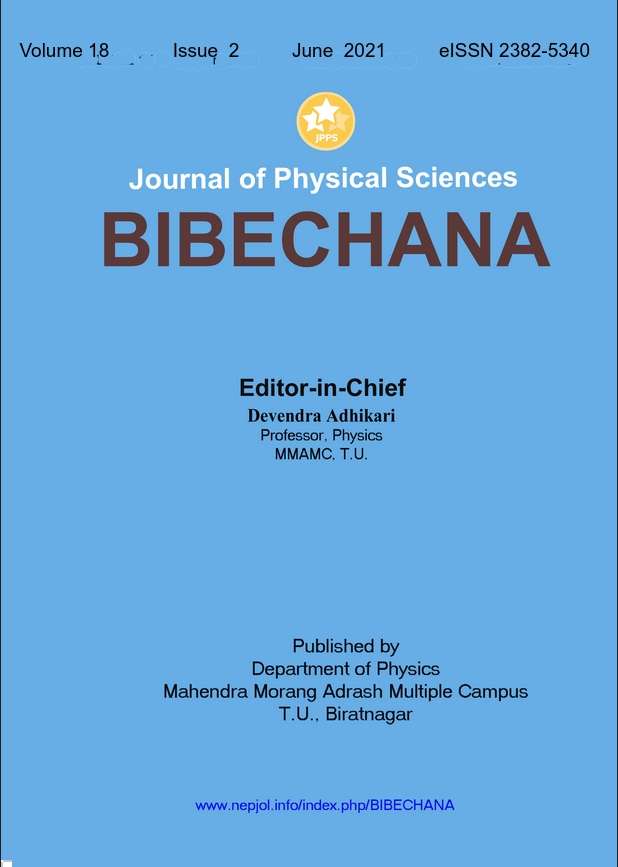Radon study around earthquake affected areas of Nepal
DOI:
https://doi.org/10.3126/bibechana.v18i2.29840Keywords:
Indoor radon, Annual effective dose, Earthquake, LR 115, SSNTDAbstract
Indoor radon concentrations were measured in dwellings of the earthquake-affected areas of Kathmandu valley, Gorkha, and Sindhupalchowk districts of Nepal using passive radon dosimeter LR115, a Solid State Nuclear Track Detector, SSNTD. The radon concentrations in dwellings of Kathmandu valley ranged from 11±6 Bq/m3 to 135±26 Bq/m3 with a mean of 67.63 Bq/m3. For Gorkha, it ranged from 18±7 Bq/m3 to 363±65 Bq/m3 with an average of 104.64 Bq/m3 while minimum, maximum and average radon concentrations for Sindhupalchowk were 14±6 Bq/m3, 397±71 Bq/m3, and 78.46 Bq/m3 respectively. The average annual effective dose to the inhabitants of Kathmandu valley, Gorkha, and Sindhupalchowk districts was calculated as 1.46 mSv/y, 2.26 mSv/y, and 1.69 mSv/y respectively. These annual doses were well below the action level of 10 mSv/y recommended by the International Commission on Radiological Protection which implies no significant radiological health hazards. Also, Excess Lifetime Cancer Risk and Lungs Cancer Cases per year per million people were determined.
BIBECHANA 18 (2) (2021) 61-67
Downloads
Downloads
Published
How to Cite
Issue
Section
License
This license enables reusers to distribute, remix, adapt, and build upon the material in any medium or format for noncommercial purposes only, and only so long as attribution is given to the creator.




